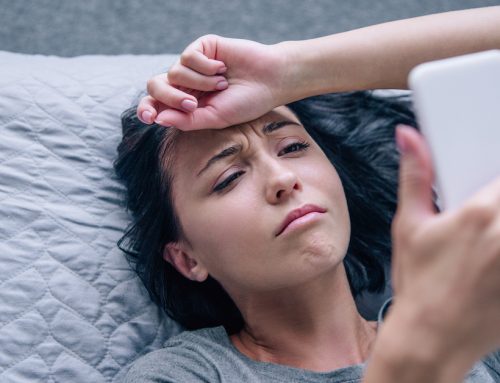If you’ve been with us for a while, you’re aware that the right nutrients in fruits and vegetables can improve the way your brain functions and ages.
But researchers have now also found that the color scheme that surrounds you in your daily life exerts a strong influence on how your mind works.
Some colors help you focus. Others may expand your creative powers. And still others may even ease the pain of debilitating headaches. Helpful stuff, if you know which color affects what. Here’s the scoop. . .
In a study at the University of British Columbia in Canada, researchers looking into the effects of color discovered that blue and red can exert significantly different changes in how well we perform specific mental tasks.
Their tests revealed that blue seems to be better at supporting creative exercises like brainstorming for new ideas. In contrast, red apparently helps fulfil tasks that demand attention to close detail like proofreading.1
Researcher Juliet Zhu believes that these differences can be attributed to the fact that red and blue stimulate different “unconscious motivations” that are linked to the everyday objects we associate with these colors.
“Thanks to stop signs, emergency vehicles and teachers’ red pens, we associate red with danger, mistakes and caution,” she says. “The avoidance motivation, or heightened state, that red activates makes us vigilant and thus helps us perform tasks where careful attention is required to produce a right or wrong answer.”
In contrast, she says, blue is associated with being able to creatively think outside the proverbial box – “Through associations with the sky, the ocean and water, most people associate blue with openness, peace and tranquility,” she says. “The benign cues make people feel safe about being creative and exploratory. Not surprisingly it is people’s favorite color.”
A Color for Better Cognition
Green is another color that research shows can enhance your cognitive abilities. Research in Australia demonstrates that working in a room with green walls or being able to stare out the window at a green landscape can help you stay more alert and concentrate better and longer.2
According to researcher Kate Lee, “We know that green roofs are great for the environment, but now we can say that they boost attention too.”
Other sources of green can be beneficial. A study in England revealed that having houseplants in your office and home boosts mood and increases attention span. This study found that the plants increased productivity and enhanced mental focus.3
And there’s another intriguing use of green light that researchers are still investigating: Research at the Harvard Medical School demonstrates that pure-wavelength green light can reduce the pain of migraine headaches and ease photophobia – sensitivity to light in general.4
Photophobia, say the researchers, affects four out of five migraine sufferers. It can be the most disabling of migraine symptoms.
The Harvard researchers report that pure green light can reduce migraine headache pain by about 20 percent.
Unfortunately, right now the pure green light these researchers used is not available to consumers. But if you are plagued by migraines, it might be worth trying whatever green light you can find – a green light bulb, for instance.
Improved Sleep
Meanwhile, researchers at Columbia University have found that letting your eyes take in the right color light in the evening may help you fight off insomnia.
Many people have sleeping problems because they use devices in the evening like smartphones, tablets and computers that give off a lot of light from the blue end of the spectrum. The blue light disrupts the release of hormones like melatonin that help us sleep.
But the scientists found that wearing amber lenses after dinner – which absorb blue light waves and block them from entering the eyes – can offset this insomnia-inducing effect. In tests of glasses with amber lenses, the researchers found they helped people sleep an average of 30 more minutes per night.5
In investigating these studies of color, I was surprised to find so many strong influences on brain function, pain and sleep. But now I know why I like having my work desk face a window that looks out on an open expanse of green grass and trees.
- http://science.sciencemag.org/content/323/5918/1226?sid=12a960df-d594-4afe-8ae0-382ad3defdbd
- http://www.sciencedirect.com/science/article/pii/S0272494415000328
- http://www.ncbi.nlm.nih.gov/pubmed/?term=Marlon+Nieuwenhuis
- https://www.ncbi.nlm.nih.gov/pubmed/27190022
- https://www.ncbi.nlm.nih.gov/pubmed/29101797







